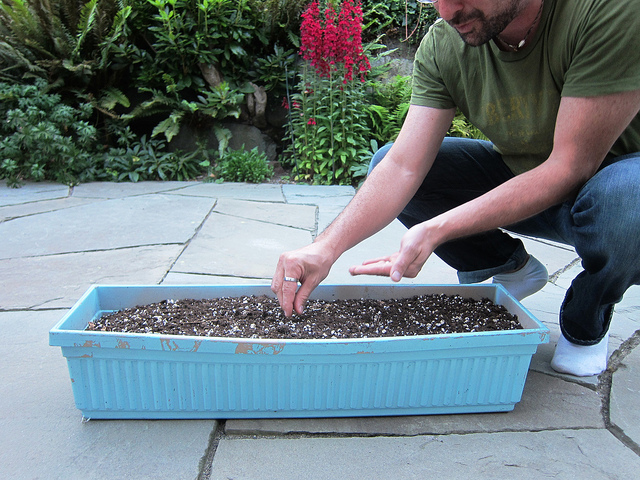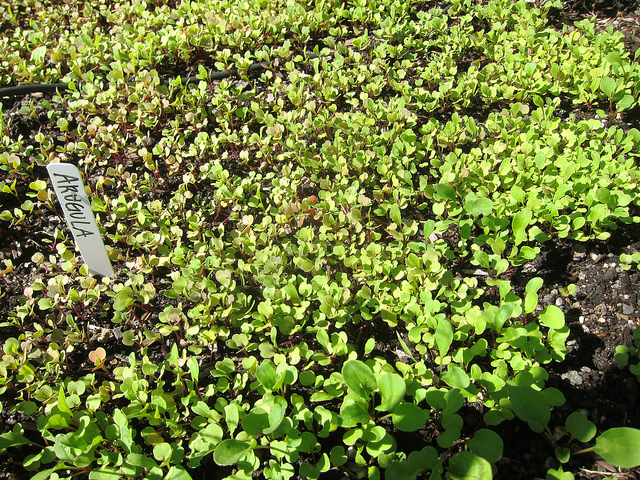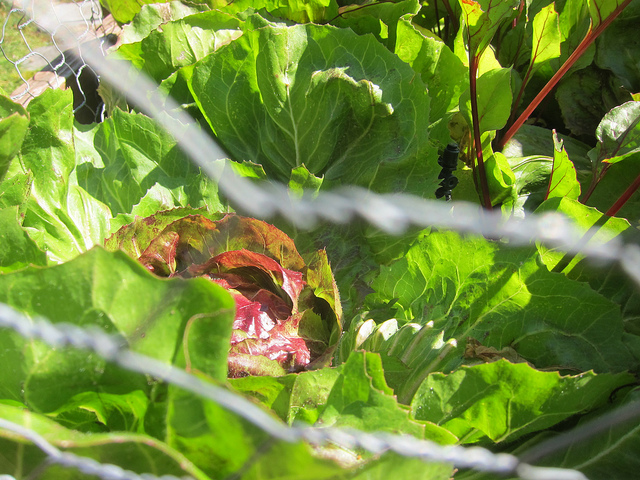Five Container Plants For Fall
It's hard to believe, but fall is on its way. Here, a quick guide on what to plant now for the perfect patio harvest come cold weather.
 It doesn’t necessarily feel like it, but sadly summer is waning. Our days are shorter and while temperatures may remain hot (you lucky ducks!), shorter days means less light for growing plants. In many states across the country this means it’s time to get the winter garden going, if you haven’t already. Late summer begs for cool loving crops that are quick to grow. For anyone starting now, smaller leafy greens are your friend.
It doesn’t necessarily feel like it, but sadly summer is waning. Our days are shorter and while temperatures may remain hot (you lucky ducks!), shorter days means less light for growing plants. In many states across the country this means it’s time to get the winter garden going, if you haven’t already. Late summer begs for cool loving crops that are quick to grow. For anyone starting now, smaller leafy greens are your friend.
By nature, leafy greens require less direct sunlight, prefer it when it’s a bit cooler, and can be grown in both a proper garden bed and a smaller container. Most greens germinate quickly and many can be found as starts. Following is a list of five plants to grow right now – some can be harvested before winter sets in, and others can be left to overwinter in regions with mild temperatures. Be sure to get planting straight away though. Mother Nature is moving fast and I can tell you from experience...she usually wins the race.
Getting Started You’ll need a pot filled to the brim with potting soil. Feel free to use an old pot; just refresh the soil and make sure you remove all old root hairs. If you’re using seed, you can direct sow, which is a method in which you sow a seed directly into the soil.
You can also broadcast sow seeds for loose leaves: you do this by taking a handful of seeds and scattering them evenly over a designated area, sort of like salting meat. These seeds fall on the soil haphazardly and lack any spacing. (I'm showing the technique in a garden bed here, but it also works for containers!)
Of course, you can also use a start when planting this fall. Plant starts are a bit easier as they give you a jump on the season and don’t require you to nurture seeds through germination. When transplanting a plant start into a pot, you need only provide enough space for the plant to grow. Loosen up the transplants root system and be sure to separate out individual plants so you allow them room to come to full maturity.
1. Lettuce Many lettuces will grow and mature in less than two months. These are wonderful immediate gratification kind of plants, as they germinate and grow quickly and are easily harvested. Lettuces come in assorted sizes and colors, allowing for a nice salad bowl mix, but be sure to choose varieties that will do well late in the season – I really love Green Deer Tongue lettuce for winter and have heard great things about Arctic King, a butterhead for anyone wanting a traditional green lettuce leaf.
Where and When to Plant • Sow lettuce seed or plant starts through the month of September.
Pot Size • Sow seeds in a long, shallow, pale-colored plastic container -- lettuces are shallow-rooted, and plastic containers hold water a bit longer than clay ones. • If using seeds, be sure to keep the seedbed moist until seeds germinate, which typically happens in five to seven days.
How to Harvest • To harvest lettuce, try to remove the larger outer leaves first. Using a small pair of scissors, cut the individual leaf stems as close to the base of the main stem as possible, leaving some interior leaves behind.
 2. Chervil
Chervil has tender fernlike leaves, it is extremely dainty and delicate. The flavor is not unlike dill, but it is sharper and more crisp. It doesn’t linger on your palate as dill can, and it won’t overpower a dish. Chervil is a great match for eggs, light broths, and with white fish of any kind. (Editor's Note: The chervil hasn't popped up in Amy's garden yet, so you get a photo of sowing in action! Chervil looks like this.)
2. Chervil
Chervil has tender fernlike leaves, it is extremely dainty and delicate. The flavor is not unlike dill, but it is sharper and more crisp. It doesn’t linger on your palate as dill can, and it won’t overpower a dish. Chervil is a great match for eggs, light broths, and with white fish of any kind. (Editor's Note: The chervil hasn't popped up in Amy's garden yet, so you get a photo of sowing in action! Chervil looks like this.)
Where and When to Plant • Sow in late summer.
Pot Size • Chervil can be grown in a medium-depth pot, about eight to twelve inches deep. The wider the pot, the more thickly the plant will fill in, so keep that in mind when choosing.
How to Harvest • Cut the entire stem of chervil and use both leaves and stem. • The plant will quickly fill back in, so harvest often!
 3. Green Onions
Scallions, chives, green onions – they are all in the same family of allium and are quick producing. You can grow for greens or the whole plant.
3. Green Onions
Scallions, chives, green onions – they are all in the same family of allium and are quick producing. You can grow for greens or the whole plant.
Where and When to Plant • Green onions can be sown in late summer for a fall harvest.
Pot Size • A shallow container works well. Try these in a gutter garden!
How to Harvest • Pull the entire scallion from the soil, if you’d like to use the white. • For greens only, trim the stems leaving a few inches of the green onion behind so it can re-grow.
 4. Arugula
Arugula is a leafy green that produces long flat leaves with a distinct peppery flavor. Each seed produces one thin stem, which leaves grow out from. You can further your harvest by cutting them back often.
4. Arugula
Arugula is a leafy green that produces long flat leaves with a distinct peppery flavor. Each seed produces one thin stem, which leaves grow out from. You can further your harvest by cutting them back often.
Where and When to Plant • Sow arugula seeds in the top layer of potting soil from late August through October.
Pot Size • If given the room, arugula plants may grow to well over two feet! In a small to medium container, however, leaves grow the perfect size for salad.
How to Harvest • Cut arugula at the base of each leaf off the main stem. • You can decide for yourself when the leaf is big enough, but larger leaves are much more peppery.
 5. Chicories
Chicories are essentially bitter salad greens that can be eaten raw or take well to grilling. Chicories such as escaroles and endives are good choices for fall.
5. Chicories
Chicories are essentially bitter salad greens that can be eaten raw or take well to grilling. Chicories such as escaroles and endives are good choices for fall.
Where and When to Plant • Sow seed or plant starts now through the first week of September.
Pot Size • Sow seeds in a long, shallow, pale-colored plastic container, as chicories are also shallow rooted plants.
How to Harvest • To harvest, remove the larger outer leaves first. Like for lettuce, using a small pair of scissors, cut the individual leaf stems as close to the base of the main stem as possible, leaving some interior leaves behind.

